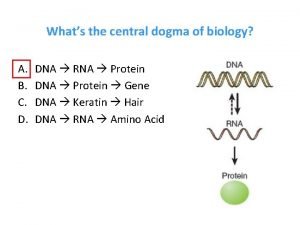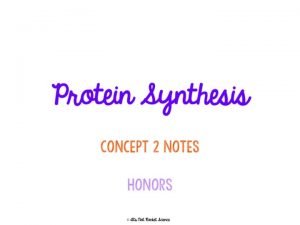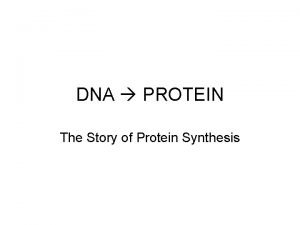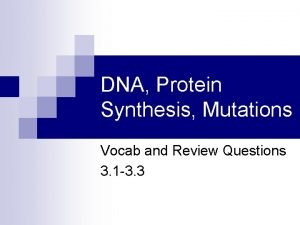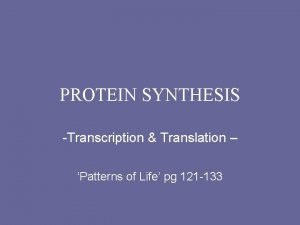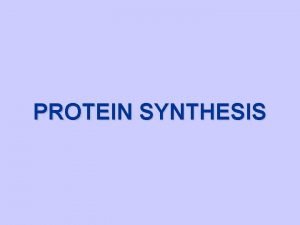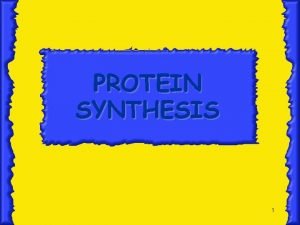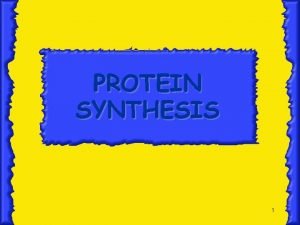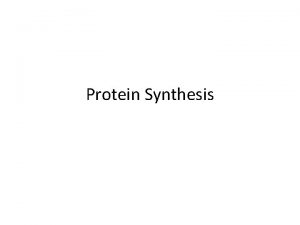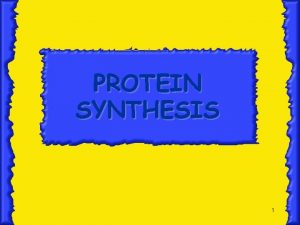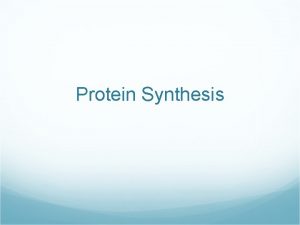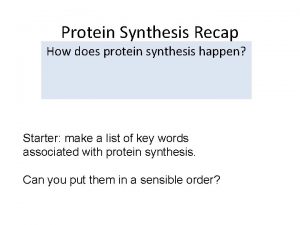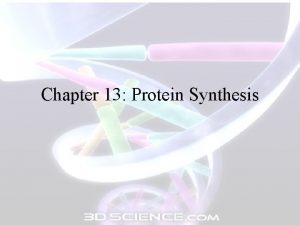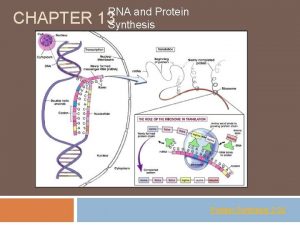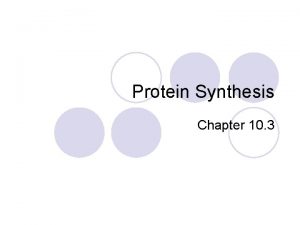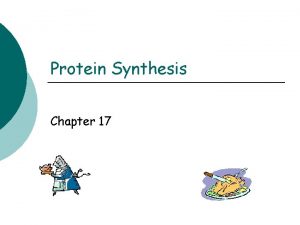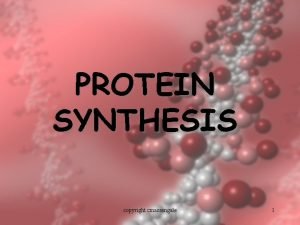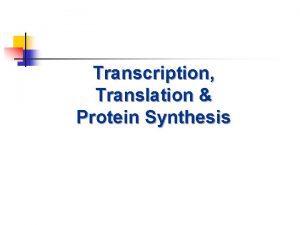Protein Synthesis Chapter 13 Protein Synthesis How does


















- Slides: 18

Protein Synthesis Chapter 13

Protein Synthesis Ø How does your DNA eventually lead to your different phenotypes (hair color, eye color, etc)

RNA Ø RNA is a nucleic acid (like DNA) which is made up of nucleotides EXCEPT its sugar is ribose instead of deoxyribose and it has Uracil instead of Thymine. Bases: Adenine (A), Guanine (G), Cytosine (C), & Uracil (U) that bonds with A in RNA

RNA Ø RNA is also only single-stranded, while DNA is doublestranded.

Three types of RNA Ø 1. Messenger RNA (m. RNA) – carries genetic information from DNA in the nucleus out to the ribosomes in the cytoplasm.

Three types of RNA Ø 2. Transfer RNA (t. RNA) – single chain folded into a hairpin shape that binds to specific amino acids

Three Types of RNA Ø 3. Ribosomal RNA (r. RNA) – Proteins are assembled on ribosomes which are made of subunits. These subunits are made of several ribosomal RNA.

Protein Synthesis Ø Protein Synthesis = Transcription + Translation

Steps of Transcription Ø 1. Sections of DNA unzip, exposing the base pairs, by using RNA polymerase. Ø 2. Pieces of m. RNA come to the DNA strand match to the proper base starting at the promotor region. ***Note – Uracil takes the place of Thymine and bonds to Adenine

Steps of Transciption Ø 3. This continues until a complete strand of m. RNA is made


m. RNA sometimes needs a bit of editing before it is able to be read (kind of like the rough draft of a term paper!) Ø Introns are portions of the m. RNA that are cut out before it leaves the nucleus. Ø Exons are the remaining portions that are spliced back together to form the final m. RNA strand. Ø RNA Editing

Translation Ø Translation = the process by which m. RNA is converted into a string of amino acids (building blocks of protein) Ø Translation happens in the ribosomes floating in the cytoplasm

Steps of Translation 1. m. RNA strand from transcription breaks away from the DNA & moves into a ribosome floating in the cytoplasm. Ø 2. Floating in the cytoplasm are loose t. RNA pieces that contain an anticodon – a sequence of 3 nucleotides Ø

Steps of Translation 3. t. RNA anticodons match up with their complementary codons on the m. RNA molecule. The t. RNA brings along the correct amino acid Ø 4. A chain of amino acids is joined to make a specific protein. Ø

Codons and Anticodons Ø A codon specifies a particular amino acid Ø Both codons and anicodons are sequences of three base pairs. Ø Example: AUG or UAG or CGA Ø AUG signifies the start of an amino acid sequence.

Final Product = Proteins Ø Proteins – organic molecules made up of amino acids. Ø There are 20 amino acids Ø Proteins do such things as control biochemical pathways, direct the production of lipids, and take responsibility for cell movement.

Protein Synthesis Animation Ø Protein Synthesis Animation
 Totipotent cells
Totipotent cells Section 12-3 rna and protein synthesis
Section 12-3 rna and protein synthesis Protein synthesis
Protein synthesis Restaurant analogy
Restaurant analogy Transcription and translation
Transcription and translation Transcription and translation bbc bitesize
Transcription and translation bbc bitesize Protein synthesis and mutations
Protein synthesis and mutations Protein synthesis cookie analogy
Protein synthesis cookie analogy Elongation
Elongation Rna types
Rna types Protein synthesis
Protein synthesis Protein synthesis
Protein synthesis Protein synthesis and mutations
Protein synthesis and mutations Rna and protein synthesis study guide
Rna and protein synthesis study guide Synthesis
Synthesis Protein synthesis and mutations
Protein synthesis and mutations Protein synthesis animation mcgraw hill
Protein synthesis animation mcgraw hill Molecular genetics and biotechnology
Molecular genetics and biotechnology Transcription and translation
Transcription and translation








